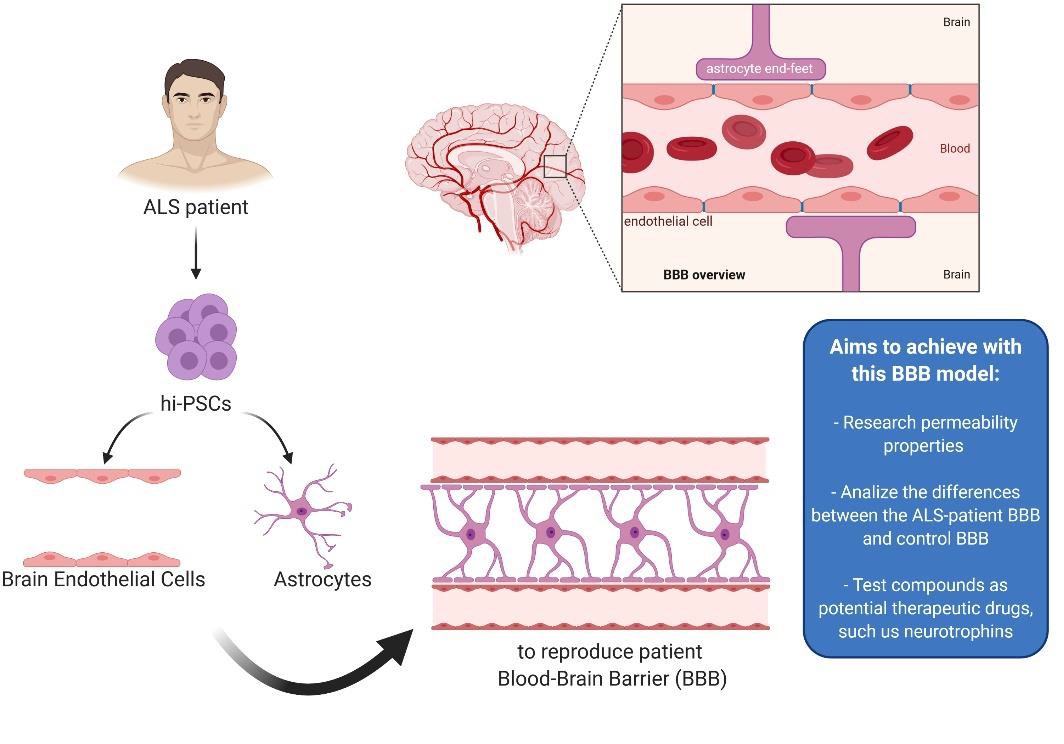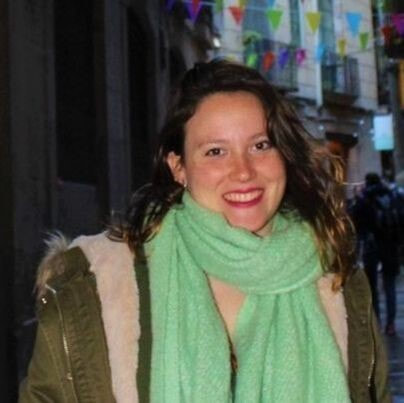Blood-Brain Barrier in vitro model to study neurodegeneration
|
The Blood-Brain Barrier (BBB) is a specialized and dynamic membrane that protects the brain from the external blood-flow. The blood contains and transports some molecules that can be toxic to the brain. The BBB is also essential in selecting which molecules can enter the brain and the spinal cord and these include therapeutic drugs, thus affecting patient treatment.
BBB dysfunction is involved in several neurodegenerative pathologies and by creating a model in the laboratory we may be able to explore it and identify alterations involved in the disease. A BBB model will be like an open window to explore the connection between the brain and the rest of the body. Because of its complex function, different layers of cells, all with their characteristics and specialised roles, comprise the BBB. As part of the EuroNeurotrophin Consortium, we use pluripotent stem cells donated by patients affected by motor neuron disease/amyotrophic lateral sclerosis (MND/ALS). To reproduce the most accurate BBB model we differentiate patients stem cells into brain endothelial stem cells (BMECs). BMECs form the basic structure of the BBB, allowing us to analyse the differences between a healthy and diseased barrier so that we can better understand its impairment in MND. We will also explore the interaction between BMECs and astrocytes, reproducing the BBB environment. In a pathological context, we would able to explore how these alterations affect disease and analyse the toxic compounds that affect the function of the BBB.
In terms of the EuroNeurotrophin project, we will use our laboratory model to identify the most potent neurotrophin mimetics that are also efficient in crossing the BBB. With our patient-derived model, we would able to test drugs as the neurotrophin molecules developed by other ESRs within the consortium, thus reaching the brain and spinal cord. The relevance of this model as an approach of patients-BBB would offer us the possibility to test drugs as a potential MND treatment. |
Ana works at the University of Sheffield in the Sheffield Institute for Translational Neuroscience (SITraN). She is developing Human Cell-Based Models for the study of Blood Brain Barrier Molecular Permeability.
|



